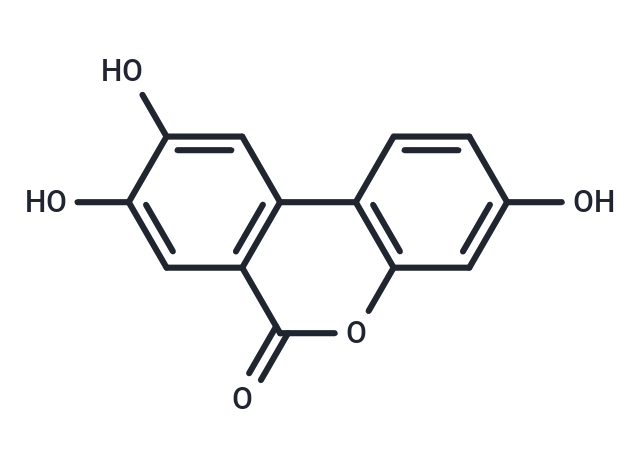Shopping Cart
- Remove All
 Your shopping cart is currently empty
Your shopping cart is currently empty

Urolithin C is a gut metabolite of ellagic acid. Urolithin C induces apoptosis in PC12 cells through a mitochondria-mediated pathway.

| Pack Size | Price | Availability | Quantity |
|---|---|---|---|
| 5 mg | $48 | In Stock | |
| 10 mg | $80 | In Stock | |
| 25 mg | $146 | In Stock | |
| 50 mg | $247 | In Stock | |
| 100 mg | $372 | In Stock | |
| 200 mg | $549 | In Stock | |
| 500 mg | $869 | In Stock | |
| 1 mL x 10 mM (in DMSO) | $54 | In Stock |
| Description | Urolithin C is a gut metabolite of ellagic acid. Urolithin C induces apoptosis in PC12 cells through a mitochondria-mediated pathway. |
| In vitro | Urolithin C is a glucose-dependent activator of insulin secretion acting by facilitating L-type Ca2+ channel opening and Ca2+ influx into pancreatic β-cells.Urolithin C enhanced glucose-induced extracellular signal-regulated kinases 1/2 (ERK1/2) activation as shown by higher phosphorylation levels in INS-1 β-cells[2]. Urolithin C stimulates reactive oxygen species (ROS) formation[2]. |
| In vivo | In male Wistar rat, the half-life of the terminal part is 11.3 h and the total clearance (CL/F) is 3.41 L/h/kg. The initial volume of distribution (V1/F) is 0.831 L/kg and the steady-state volume of distribution (Vss/F) is 55.6 L/kg after the intraperitoneal administration of Urolithin C (10 mg/kg)[3]. |
| Molecular Weight | 244.2 |
| Formula | C13H8O5 |
| Cas No. | 165393-06-6 |
| Smiles | Oc1ccc2c(c1)oc(=O)c1cc(O)c(O)cc21 |
| Relative Density. | 1.640 g/cm3 (Predicted) |
| Storage | Powder: -20°C for 3 years | In solvent: -80°C for 1 year | Shipping with blue ice. | |||||||||||||||||||||||||||||||||||
| Solubility Information | DMSO: 50 mg/mL (204.75 mM), Sonication is recommended. | |||||||||||||||||||||||||||||||||||
Solution Preparation Table | ||||||||||||||||||||||||||||||||||||
DMSO
| ||||||||||||||||||||||||||||||||||||

Copyright © 2015-2025 TargetMol Chemicals Inc. All Rights Reserved.